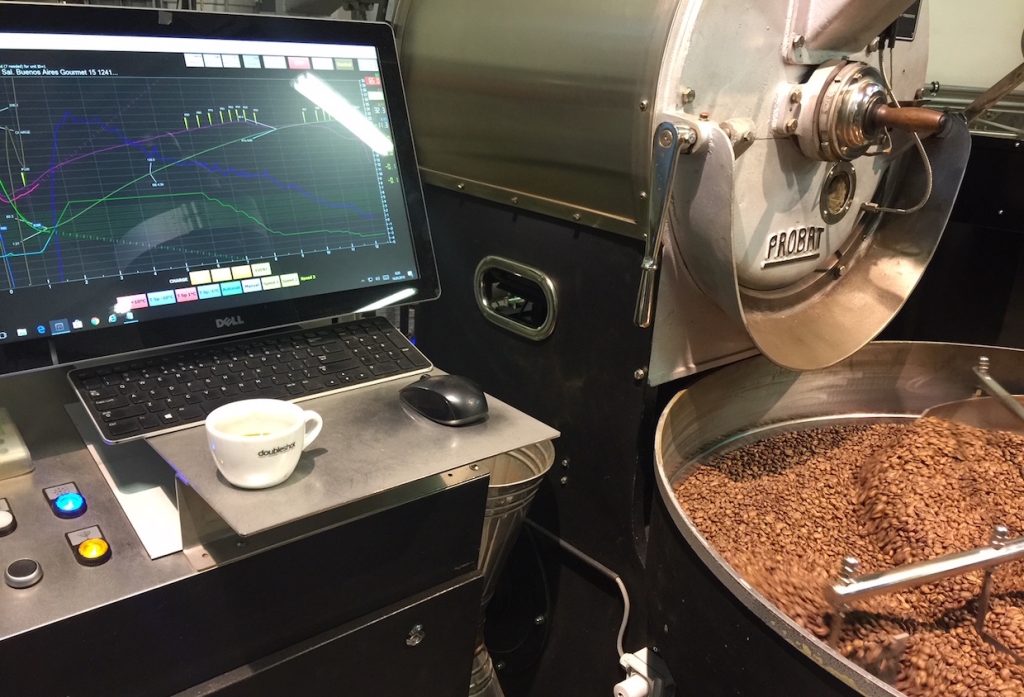An Artisan roast coffee is one that has been expertly crafted and sourced to produce an exceptional coffee. This can be achieved through a number of factors such as ethical production from the farm to the cup.
These coffees can be roasted to highlight or mask certain flavours within the bean. This is done by using a recipe that will be repeated until the roaster feels they have nailed it.
Dark Roast
Dark roasts, also known as French roast, Italian roast, New Orleans, Viennese, and European coffee have a deep, rich body with a low acidity and bold flavor notes. Dark roasted beans are often almost black and have a drawn-out oil that glosses their surface. These oils give the coffee a robust, full taste that is typically bold and smoky.
During the roasting process, as the beans heat up, they expand and crack. When this happens, the cellulose breaks down and the coffee becomes less dense. This makes it easier for hot water to move through the grounds and pull the delicious soluble compounds out of them. The type of bean and the roasting process can also impact how fast or slow this expansion and cracking occurs, which can change the flavor profile of the resulting cup.
Because of this, a dark roasted coffee can have more bitterness than a light or medium roasted coffee. Typically, this is due to the organic acids (trigonelline and chlorogenic acids) that build up during the roasting process. However, bitterness in coffee can also be caused by other factors, like the brewing time or grind size and the coffee-to-water ratio used. To get the most out of your dark roasted coffee, use a shorter brew time and experiment with different grind sizes to optimize extraction.
Light Roast
The bright astringency of light roast coffee is invigorating and refreshing. While it can be enjoyed “naked” (without any additions), its flavor is enhanced by cream, milk, sugar or even a dash of honey. Lightly roasted coffee beans also pair well with other foods that enhance their brightness and sweetness, such as buttered croissants or scones. These foods are typically served at lunch or dinner, and their flavor and texture complement light roast coffee’s subtle nuances.
With improved coffee farming and roasting techniques, roasters are able to accentuate the unique flavors of the beans themselves. Instead of masking low quality flavors, as was the case with really dark roasts, light roasts are allowing the beans to shine. This can result in complex, intricate flavors that can range from fruity to earthy (peat, nuts, dirt – sounds gross but isn’t).
Light roasts tend to have higher levels of caffeine, and they are also more delicate in body than darker brews. This makes them ideal for brewing methods that allow the coffee to be brewed over a longer period of time. This includes the pour over and French press method. This method also helps to avoid water dilution, which can negatively impact the extraction of coffee’s flavor. The right amount of water and a longer brewing time can unlock the true complexities in these types of roasts.
Medium Roast
In the middle of light and dark roasts, medium roasted coffee beans have a rich brown color with a low sheen and less silverskin (chaff) than a light or dark brew. They have a balanced body and natural flavors that are smooth and approachable. They also have lower acidity and can carry chocolate, nuts, and red fruit notes. Medium roast is the perfect gateway coffee for new drinkers, offering a balance between light and dark flavors.
A medium roasted coffee is heated to the beginning of the first crack, or audible sound that the bean makes as it expands, but not all the way through the second crack. This is the most popular roast level, and is a good choice for those who want a milder coffee that will hold up well with milk in lattes or cappuccinos. It is also known as a regular roast, breakfast roast, or city roast.
A medium roast can have flavors that are sweet and smooth with hints of oat, brown sugar, and caramel; nutty with notes of almond, peanut butter, and cashews; or fruity with hints of citrus, berries, and apple. A artisan roaster uses a precise process to heat the coffee beans evenly, preserving unique origin characteristics and creating a balance between light, medium, and dark flavors that is sure to satisfy all tastes.
Flavored
Coffee beans are chock full of delicate oils and molecules that create different flavor profiles. The oils are easily damaged by uneven heat or improper handling during the roasting process, which can drastically affect the taste of a cup of coffee. An expert artisan roaster understands the delicacy of coffee, and their equipment is carefully calibrated to precisely heat and roast each batch of beans.
The flavors used in flavored coffees do not naturally present themselves in the coffee bean, so they must be added separately from the beans before the roasting process. The flavors are mixed with extracts and oils to produce unique aromas and distinctive tastes. The oils are also important because they act as a carrier to allow the flavor compounds to adhere to the surface of the beans during the roasting process. The flavorings used can be both natural and chemical, depending on the type of coffee being produced.
The beans for a flavored coffee must be roasted to the “Goldilocks” point, which means they are neither too light nor too dark. After roasting, they must be quickly cooled to prevent over-oxidation and loss of flavor. This is because the chemicals in the flavor syrups are toxic to beans, and they can leave behind a residue that will affect future processing. To avoid this, a producer of flavored coffees must either process the beans in a separate facility or thoroughly clean their equipment after every batch of flavored beans.


